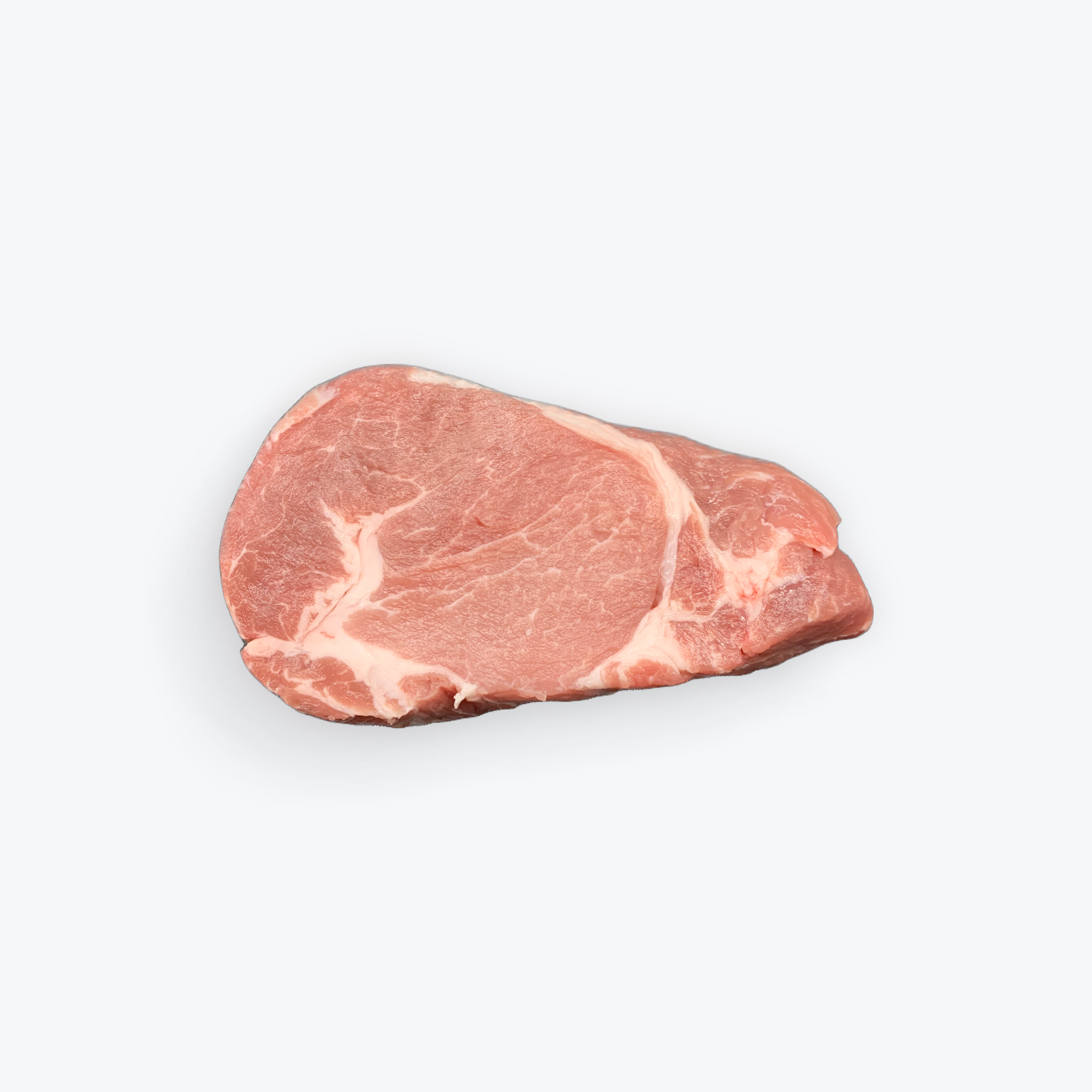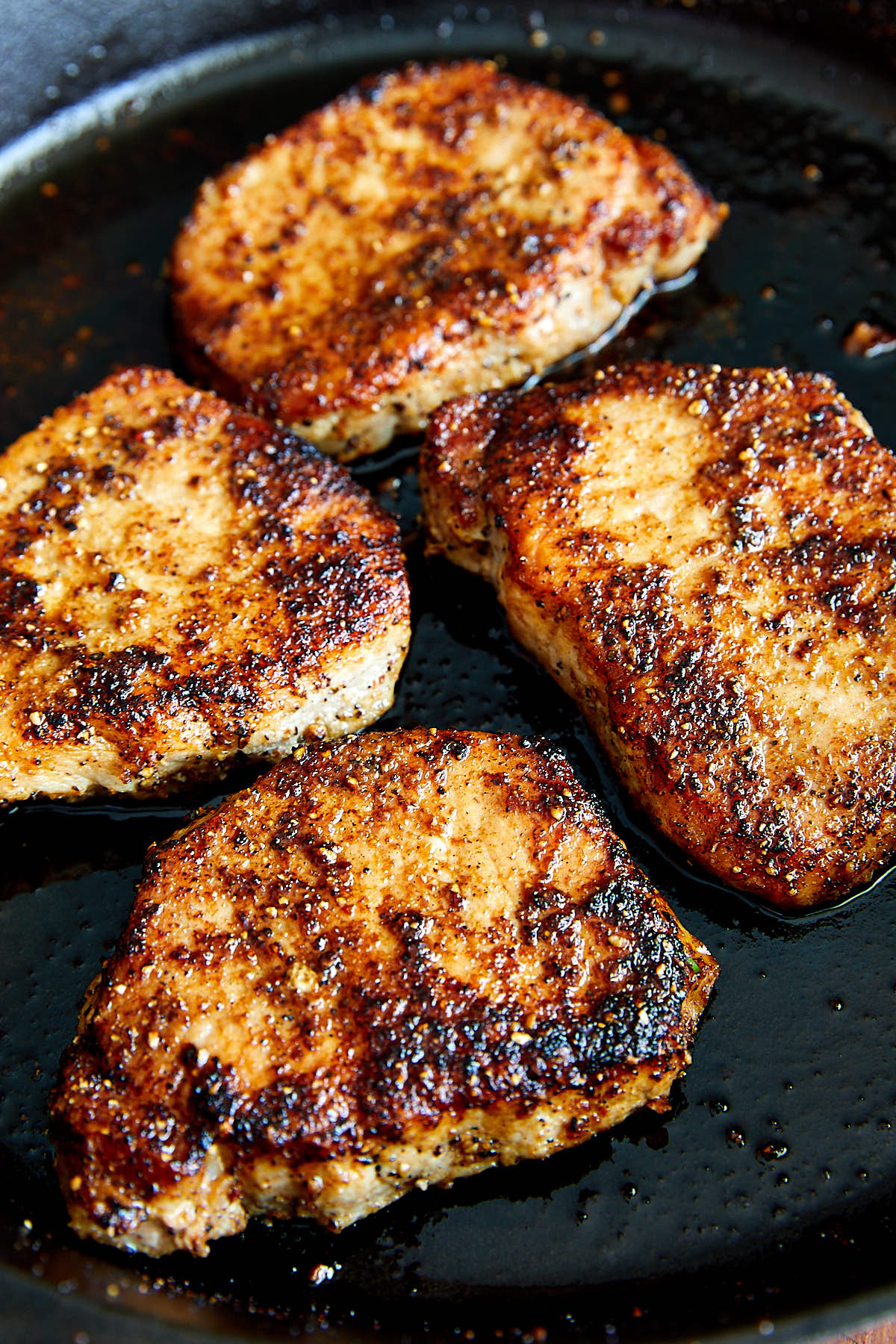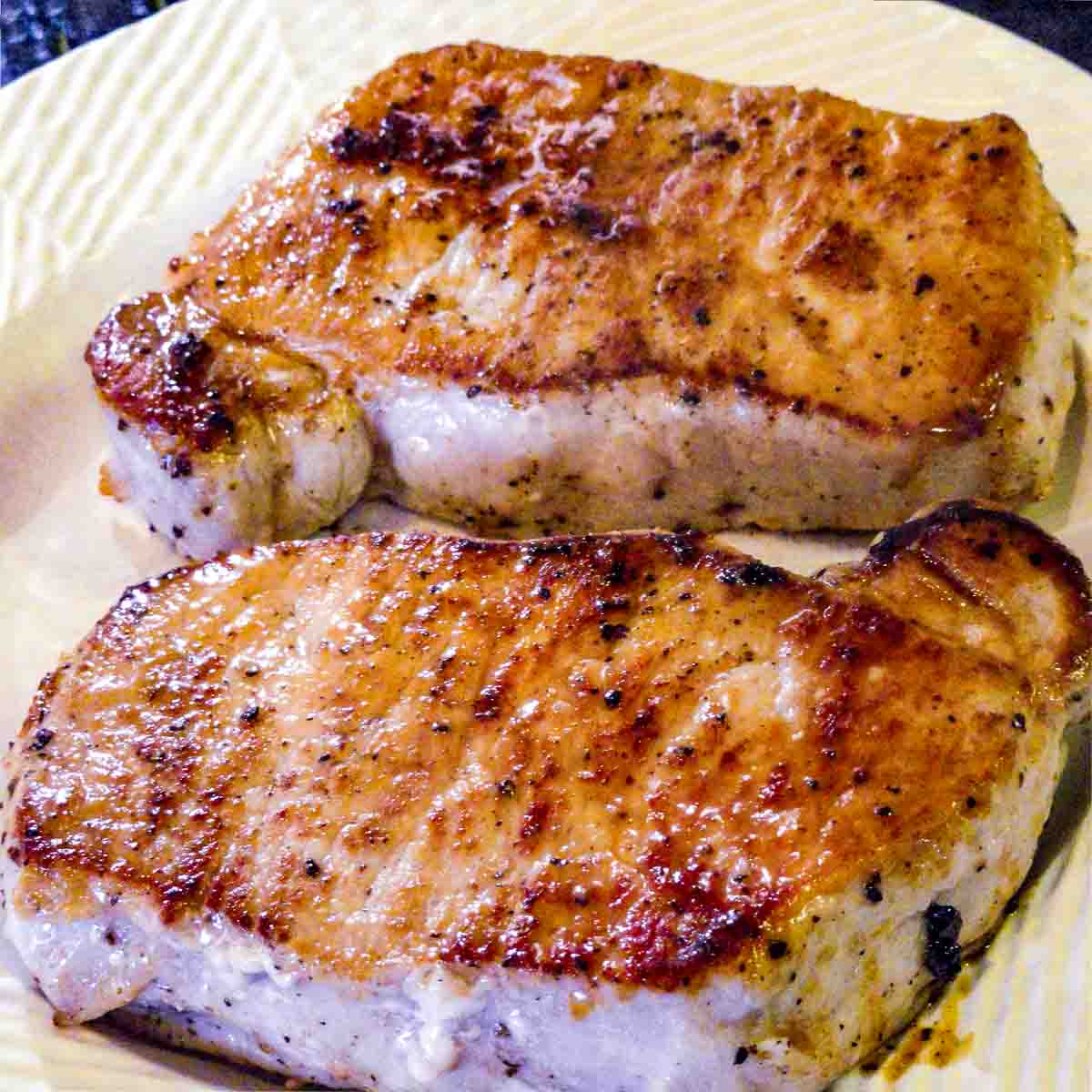Internal Temp Of Boneless Pork Chops: Your Ultimate Guide To Perfectly Cooked Meat
Let’s cut straight to the chase—when it comes to cooking boneless pork chops, getting the internal temp just right can make or break the meal. Nobody wants dry, overcooked pork chops, but undercooked chops? Yeah, that’s a big no-no too. So, today, we’re diving deep into the world of boneless pork chops and uncovering the secret behind that perfect internal temp. Buckle up, because this is gonna be a juicy ride!
Cooking boneless pork chops might seem simple at first glance, but trust me, there’s more to it than meets the eye. It’s not just about slapping them on the grill or tossing them in a pan; it’s about mastering the science behind the internal temp. Whether you’re a seasoned chef or a kitchen newbie, understanding the ideal temp can transform your pork chops from okay to outstanding.
We’ve all been there—you put those chops on the heat, wait patiently, and then cut into them only to find they’re either tough as leather or still pink in the middle. Frustrating, right? That’s why we’re here. We’re going to break down everything you need to know about the internal temp of boneless pork chops so you can cook them like a pro every single time.
- Brittany Henry The Rising Star In The Entertainment World
- Unsolved Mysteries New Episodes Dive Into The World Of Mystery And Intrigue
Why Internal Temp Matters for Boneless Pork Chops
Let’s talk turkey—or rather, pork. The internal temp of your boneless pork chops is crucial because it determines whether the meat is safe to eat and how flavorful and juicy it will be. Pork chops cooked at the wrong temp can end up being either a chewy disappointment or a health hazard. Yeah, we don’t want either of those things.
What Happens if You Undercook Pork Chops?
Undercooked pork chops are a big no-go. Not only do they taste funky, but they can also carry harmful bacteria like Salmonella or Trichinella. You don’t want to end up with a stomach bug after a fancy dinner, right? That’s why hitting the right internal temp is key to making sure your pork chops are safe to eat.
Here’s a quick rundown of what happens if you don’t cook pork chops enough:
- Keith Craft Age The Man Behind The Lens And Beyond
- Does Miranda Get Married A Deep Dive Into Love Relationships And Everything In Between
- They remain pink or raw in the center.
- They might have a weird texture, like slimy or mushy.
- They could harbor bacteria that can make you sick.
What Happens if You Overcook Pork Chops?
On the flip side, overcooking your pork chops is just as bad. When you crank up the heat and cook them for too long, they lose all their moisture and become tough and dry. It’s like eating a hockey puck, and nobody wants that. The key is finding that sweet spot where the chops are cooked just right—juicy, tender, and safe to eat.
The Ideal Internal Temp for Boneless Pork Chops
Alright, so what’s the magic number? According to the USDA, the safe internal temp for boneless pork chops is 145°F (63°C), followed by a three-minute rest period. This temp ensures that any harmful bacteria are killed off while still leaving the meat juicy and flavorful. But don’t just rely on your instincts—grab that meat thermometer and get to work.
How to Measure Internal Temp Accurately
Investing in a good meat thermometer is one of the best things you can do for your cooking game. Here’s how to use it like a pro:
- Insert the thermometer into the thickest part of the chop, avoiding any bones or fat.
- Make sure the probe is in the center of the meat, not touching the surface or pan.
- Wait for the reading to stabilize before removing the thermometer.
Pro tip: Digital thermometers are faster and more accurate than analog ones, so if you haven’t made the switch yet, now’s the time!
Factors That Affect Internal Temp
Not all boneless pork chops are created equal, and several factors can influence their internal temp. Let’s break it down:
Thickness of the Chops
Thicker chops take longer to cook and require more attention to reach the ideal temp. Thin chops, on the other hand, cook faster and can dry out quickly if you’re not careful. Always adjust your cooking time based on the thickness of your chops.
Cooking Method
Whether you’re grilling, pan-searing, baking, or slow-cooking your pork chops, the method you choose affects the internal temp. Some methods, like grilling, can sear the outside while leaving the inside undercooked, so you’ll need to compensate by adjusting the cooking time or temp.
Starting Temp of the Meat
Let your pork chops sit at room temp for about 20-30 minutes before cooking. This helps them cook more evenly and reduces the risk of burning the outside while the inside remains raw.
Popular Cooking Methods for Boneless Pork Chops
Now that we’ve covered the basics, let’s dive into some popular ways to cook boneless pork chops and how to achieve that perfect internal temp with each method.
Pan-Seared Pork Chops
Pan-searing is a classic method that gives you a delicious crust on the outside and juicy goodness on the inside. Here’s how to do it:
- Heat a heavy skillet over medium-high heat.
- Add a bit of oil, then place the chops in the pan.
- Cook for 4-5 minutes per side, or until the internal temp reaches 145°F.
- Let them rest for a few minutes before serving.
Grilled Pork Chops
Grilling is perfect for summer BBQs and adds a smoky flavor to your pork chops. Just remember to keep an eye on the internal temp:
- Preheat your grill to medium-high heat.
- Brush the chops with oil and season generously.
- Grill for 4-6 minutes per side, checking the temp regularly.
- Remove from the grill when the temp hits 145°F.
Baked Pork Chops
Baking is a hands-off method that’s perfect for busy weeknights. Here’s how to bake your pork chops to perfection:
- Preheat your oven to 400°F (200°C).
- Season the chops and place them on a baking sheet.
- Bake for 18-20 minutes, or until the internal temp reaches 145°F.
- Let them rest before digging in.
How to Tell if Boneless Pork Chops Are Done Without a Thermometer
What if you don’t have a meat thermometer handy? Don’t panic—there are a few tricks you can use to check if your pork chops are done:
Touch Test
Press the center of the chop with your finger. If it feels firm but still has a bit of give, it’s probably done. If it’s too soft or too hard, it might need more time.
Visual Inspection
Check the juices that come out when you cut into the chop. If they’re clear or slightly pink, you’re good to go. If they’re red or bloody, it needs more cooking.
Tips for Juicy Boneless Pork Chops
Now that you know the importance of internal temp, here are a few extra tips to ensure your pork chops are juicy and delicious every time:
- Marinate your chops for at least an hour before cooking to add flavor and moisture.
- Don’t overcrowd the pan or grill—leave enough space for the heat to circulate evenly.
- Let the chops rest for a few minutes after cooking to allow the juices to redistribute.
- Use a meat thermometer to check the temp—guessing can lead to overcooked or undercooked chops.
Common Mistakes to Avoid
Even the best cooks make mistakes sometimes, but being aware of them can help you avoid them. Here are a few common pitfalls to watch out for:
- Overcooking the chops, which leads to dry, tough meat.
- Not letting the chops rest before serving, which causes the juices to escape.
- Using high heat for too long, which burns the outside while leaving the inside raw.
Conclusion
In conclusion, mastering the internal temp of boneless pork chops is the key to cooking them perfectly every time. Whether you’re pan-searing, grilling, or baking, always aim for that magic number of 145°F (63°C) for safe, juicy, and flavorful chops. Remember to use a meat thermometer, adjust your cooking time based on thickness, and let the chops rest before serving.
So, what are you waiting for? Head to the kitchen, fire up your grill or stove, and put your newfound knowledge to the test. And don’t forget to share this article with your friends so they can cook perfect pork chops too. Happy cooking!
Table of Contents
- Why Internal Temp Matters for Boneless Pork Chops
- The Ideal Internal Temp for Boneless Pork Chops
- Factors That Affect Internal Temp
- Popular Cooking Methods for Boneless Pork Chops
- How to Tell if Boneless Pork Chops Are Done Without a Thermometer
- Tips for Juicy Boneless Pork Chops
- Common Mistakes to Avoid



Detail Author:
- Name : Vernie Ankunding
- Username : eduardo.macejkovic
- Email : brown75@corkery.com
- Birthdate : 1983-12-30
- Address : 17419 Fritsch Ville Mckenziestad, IN 09183-5455
- Phone : (570) 984-6952
- Company : Schaefer, Schuppe and Volkman
- Job : Secretary
- Bio : Praesentium omnis placeat quia molestias quam. Delectus atque ea nobis natus. Libero fugit velit quis. Impedit delectus quod sunt saepe saepe.
Socials
tiktok:
- url : https://tiktok.com/@monahant
- username : monahant
- bio : Ex ad necessitatibus unde laboriosam labore maxime aut voluptatem.
- followers : 3975
- following : 2529
linkedin:
- url : https://linkedin.com/in/theamonahan
- username : theamonahan
- bio : Est earum est maiores qui sint.
- followers : 1753
- following : 1521